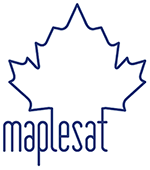Inmarsat-C
Inmarsat-C

Inmarsat C
Inmarsat C provides two-way data and messaging communication services to and from virtually anywhere in the world. The low-cost terminals and antennas are small enough to be fitted to any size of ship.
Safety communications using Inmarsat C
Inmarsat C is a two-way store and forward communication system that transmits messages in data packets in ship-to-shore, shore-to-ship and ship-to-ship direction.
The equipment comprises a small omnidirectional antenna, compact transceiver (transmitter and receiver), messaging unit and, if GMDSS-compliant or with a distress function, a Dedicated Distress Button (DDB) to activate a Distress Alert.
Inmarsat Mini C terminals are the smallest models, with some incorporating the antenna and transceiver in the same above deck unit and, depending on the model, supporting the same communication services as Inmarsat C terminals.
All modern Inmarsat C and Mini C terminals have an integrated Global Navigational Satellite Services (GNSS) receiver for an automatic position update on the terminal, which is used for distress alerting (ship’s position, course and speed), ship’s position data reporting applications and selective reception of EGC SafetyNET messages.
Distress alerts and distress priority messages transmitted via the Inmarsat C system are routed through a Land Earth Station (LES) to a Maritime Rescue Co-ordination Centre (MRCC).
Distress alerting
Distress alerting is a mandatory service on SOLAS-compliant maritime Inmarsat C and Mini C terminals and on some non-SOLAS models too. Distress alerts are sent when a ship or crew is in grave and imminent danger.
When there is no time to manually input information into the terminal, crew can simply press and hold down the DDB for approximately five seconds to transmit the alert. When the DDB is pressed, a short preformatted message including the vessel’s details and location is transmitted, with priority, from the terminal to an addressed LES that automatically routes it to an associated MRCC. The distress alert contains information on the terminal’s ID, addressed LES, date/time of alert, ship’s position, course, speed, time of last position update, nature of distress, flag and speed update.
When a distress alert is received by an MRCC, it will establish communication with the ship to organise search and rescue (SAR) services that may be required.
Enhanced Group Call
Inmarsat C and Mini C terminals can receive broadcast messages known as Enhanced Group Calls (EGC). EGC is the system for broadcasting Maritime Safety Information (MSI) and SAR- related information messages to Inmarsat C and Mini C terminals, and supports two services: SafetyNET and FleetNET.
SafetyNET is the international service for the broadcast and automatic reception of maritime safety information (MSI) and SAR-related information via the Inmarsat EGC system.
SafetyNET receiving capability is part of the mandatory equipment required to be carried by certain ships in accordance with the provisions of the International Convention for the Safety of Life at Sea (SOLAS) 1974, as amended.
It is used by, but not limited to, NAVAREA co-ordinators for NAVAREA warnings and other urgent safety-related information; national coordinators for coastal warnings and other urgent safety-related information (the world’s oceans are divided into 21 geographical sea areas, called NAVAREAs in which various governments are responsible for navigation and weather warnings); METAREA issuing services for meteorological warnings and forecasts METAREAs are sea areas for weather forecast broadcast); and MRCCs for shore-to-ship distress alerts, SAR information and other urgent safety-related information.
SafetyNET messages can be directed to all ships in an entire ocean satellite region, to fixed NAVAREAs/METAREAs, to user-defined circular and rectangular addressed areas and to coastal areas with safety, urgency or distress priority. Reception of messages with urgency and distress priority will set off audial and visual alarms on the terminal and these messages will automatically be printed out on SOLAS-compliant terminals.
All ships navigating inside the addressed areas will receive MSI automatically. To receive costal warnings, ships’ terminals should be set up accordingly.
FleetNET is a commercial service and allows information to be sent to a virtually unlimited number of predesignated mobile terminals simultaneously, irrespective of their position. To receive EGC FleetNET messages, ships should have an Enhanced Data ID (ENID) downloaded into the terminal by a FleetNET service provider, using a poll command. The service may be used by shipping companies, organisations distributing news, commercial weather providers, etc.
Inmarsat C data reporting and polling services
The data reporting service allows Inmarsat C and Mini C terminals to send short data reports, up to four data packets, to a shore-based authority or operational centre.
A typical data report could be a ship’s position report, sailing plan, or fisheries catch report – any data that can be encoded into data packets for the Inmarsat C system. One of the services to use data reporting and polling communication protocol is Long Range Identification and Tracking (LRIT) of ships, as required by the IMO.
Data reports may be sent from ships regularly, randomly or in response to a polling command from a shore-based operational centre. A typical polling command may instruct an Inmarsat C terminal to send a data report immediately or at a defined start time, with particular repetition intervals, to stop sending reports or to perform a defined task.
To transmit a data report, the MES should have Data Network ID (DNID) and Member number downloaded using polling command. Both are stored in the terminal’s memory.


